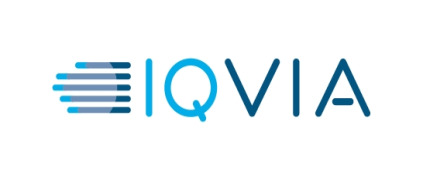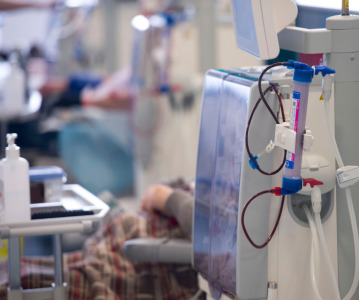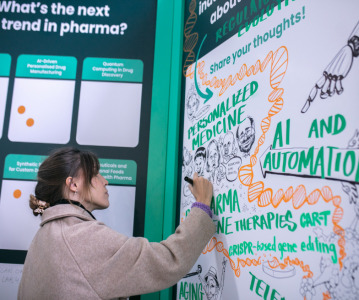Innovation in Drug Delivery - Part One: The trend towards self-administration

By Yifei Chen and Yasemin Bettina Karanis, IQVIA
In the greater context of the patient journey, more emphasis is often assigned to molecular innovation, rather than the delivery of the drug.
However, in the face of the COVID-19 pandemic, pharmaceutical and drug delivery companies have had to respond to capacity constraints of the healthcare system. One such change is that patient visits have plunged during the peak of the pandemic and levels have still not recovered to full capacity, as seen by IQVIA’s EU5 physicians’ survey. Mechanisms to improve medicine access and delivery for patients, such as moving toward self-administered rather than hospital-administered formulations, therefore will enter the priority lists for the industry.
Here we survey IQVIA’s MIDAS database, examining five-year trends (between 2015 and 2020) of injectable medicine sales data in different formulations. These are sorted by NFC123 codes, and injectables are defined as ampoules, infusions, pens and cartridges, prefilled syringes, and vials. From within, we defined self-administered and hospital-administered drugs based on NFC23 codes. The investigation spans across top therapy areas for injectables, and centre on what drives utilisation and growth toward self-administered drugs.
Figure 1. The split in global injectables market into hospital- and self-administered forms
 From Figure 1, we see that self-administered injectables demonstrate growth both in relative and absolute terms, from occupying 41% ($119bn LCUSD) of the market in 2015 to 47% ($221bn LCUSD) in 2020. Within the injectables market, self-administered forms are emerging as important drug delivery systems, outpacing the overall injectables market growth with a 13% CAGR.
From Figure 1, we see that self-administered injectables demonstrate growth both in relative and absolute terms, from occupying 41% ($119bn LCUSD) of the market in 2015 to 47% ($221bn LCUSD) in 2020. Within the injectables market, self-administered forms are emerging as important drug delivery systems, outpacing the overall injectables market growth with a 13% CAGR.
Figure 2. The split in self-administered injectables market into top therapy areas

In Figure 2, we take a deeper look into the top therapy areas for injectables to see which drive growth. The top performing therapy areas are autoimmune, antidiabetics, oncology, and multiple sclerosis. Autoimmune and diabetes drugs dominate the market share by far, with a combined worth of $130 bn. Growth is also driven by the autoimmune segment, which comprises the largest CAGR of 20% and the largest market share of $70bn. Across the past five years, it singly contributes to 41% of the overall self-administered growth.
In our next article, we will take a closer look at the therapy area dynamics for self-administered forms of injectables.
For more information on trends in packaging and devices, please email yasemin.karanis@iqvia.com

Related News
-
News US FDA adds haemodialysis bloodlines to devices shortage list
On March 14, 2025, the US FDA published an open letter to healthcare providers citing continuing supply disruptions of haemodialysis bloodlines, an essential component of dialysis machines. -
News Vertex Pharmaceuticals stock jumps as FDA approves non-opioid painkiller
UK-based Vertex Pharmaceuticals saw their stock shares soar as the US FDA signed off on the non-opioid painkiller Journavx, also known as suzetrigine, for patients with moderate to severe acute pain, caused by surgery, accidents, or injuries. -
News Lessons from CPHI Milan 2024: Sunny Intervals for Pharma Manufacturing?
As the 2024 CPHI conference wrapped up in Milan, we caught up with L.E.K. Consulting – a global strategy consulting firm with deep expertise in pharma manufacturing – to discuss evolving market perspectives and business outlook. -
News US BIOSECURE Act passed by US House of Representatives
The controversial act, which has already impacted several foreign companies operating in the US, was passed by the House of Representatives on September 9, 2024. It is now headed for the US Senate before it can be signed into law by President Joe Biden... -
News Pharma Supply Chain People Moves
The latest appointments, promotions, and structural changes across the pharmaceutical supply chain. -
News Drug prices agreed upon as part of the US Inflation Reduction Act
The Inflation Reduction Act brought into constitution by the Biden administation in 2022, which proposed a drug price negotiation between the government and pharmaceutical companies, has reached it's first agreement. -
News BIOSECURE Act continues to loom over Chinese pharma manufacturers
With the US BIOSECURE Act on its way to passing into legislation, Chinese companies are facing declining revenues within the first half of 2024 as US pharmaceutical and healthcare companies pull their businesses from the country. -
News Ophthalmologic drug product Eylea faces biosimilar threats after FDA approvals
Regeneron Pharmaceutical’s blockbuster ophthalmology drug Eylea is facing biosimilar competition as the US FDA approves Biocon’s Yesafili and Samsung Bioepis/Biogen’s Opuviz.
Recently Visited
Position your company at the heart of the global Pharma industry with a CPHI Online membership
-
Your products and solutions visible to thousands of visitors within the largest Pharma marketplace
-
Generate high-quality, engaged leads for your business, all year round
-
Promote your business as the industry’s thought-leader by hosting your reports, brochures and videos within your profile
-
Your company’s profile boosted at all participating CPHI events
-
An easy-to-use platform with a detailed dashboard showing your leads and performance






.png)
.png)